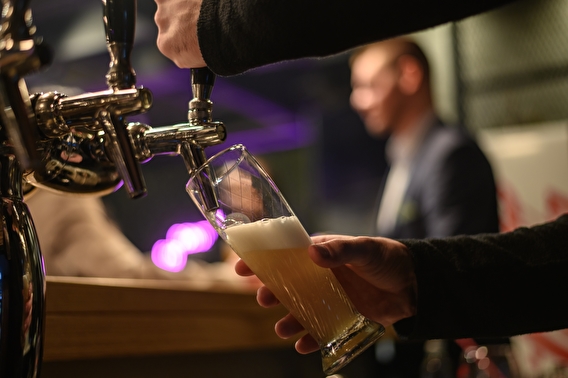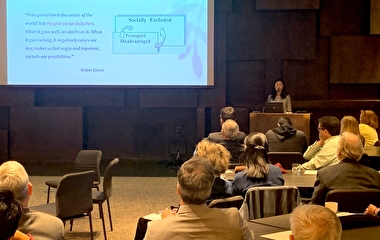
Overservice—the act of serving alcohol to an obviously intoxicated person—contributes to motor vehicle crashes and violence, and it’s illegal in 48 out of 50 states. Still, U of M researchers say overservice tends to be understudied and underenforced.
“Preventing overservice could reduce harms related to excessive alcohol consumption,” says Toben Nelson, a professor with the Division of Epidemiology and Community Health in the School of Public Health. “Although more research is needed to assess the effectiveness of overservice enforcement strategies, more understanding is also needed about how these strategies are currently used."
In recent work, researchers examined overservice enforcement at county- and municipal-level agencies across the country. They surveyed agencies between March 2019 and January 2020; of the 1,024 that responded, less than one in four reported conducting overservice enforcement, according to the team’s paper in the Journal of Community Health.
The study builds on an earlier project that found most state-level law enforcement agencies conduct little to no overservice enforcement despite its correlation to lowered instances of alcohol-related crashes. (That study used survey data collected in 2010.)
The new survey identified some broad trends:
- Agencies with an officer or division dedicated to alcohol are more likely to perceive overservice as a problem and conduct overservice enforcement.
- Small agencies (fewer than 2 officers per 1,000 population) tend to perceive overservice as a problem more often than large ones. However, large agencies tend to enforce overservice more often, possibly because they have more resources and personnel.
- Municipal agencies (compared to county agencies) are more likely to perceive and enforce overservice issues, possibly because licensed alcohol establishments tend to be more concentrated in municipalities.
Of the agencies that reported conducting overservice enforcement, the most common enforcement strategies were random inspections (69 percent of respondents), walk-throughs (82 percent), and observations (65 percent) at alcohol establishments. Asking intoxicated people involved in emergency or criminal incidents about their Place of Last Drink (POLD)—an emerging strategy that helps identify patterns of overservice—was reportedly used by around 30 percent of agencies.
The researchers posit that POLD may be less common than other strategies because agencies have to create a system to do this type of enforcement—create a new database, potentially hire new staff, and so on.
The researchers note that the study has limitations: It cannot determine cause and effect, there’s a potential bias derived from the self-reported nature of the survey, and it does not include state-level law enforcement practices—which might have unseen influences on municipal- and county-level law enforcement practices. There’s also an equity element that needs to be considered.
“Enforcement strategies must be carefully evaluated to ensure they aren’t contributing to inequities,” says Daniel Schriemer, a research coordinator with the Division of Epidemiology and Community Health. “It may also make sense to consider whether a different agency, such as a health department, could take the lead in addressing overservice, as this is fundamentally a public health issue.”
Overall, however, the survey does identify some useful trends. “Our findings can guide future research and evaluation,” Nelson says, “and ultimately help determine evidence-based strategies to reduce alcohol-related harms.”
Others on the team included Kathleen M. Lenk, Natalie Scholz, Darin J. Erickson, Traci L. Toomey, Spruha Joshi, and Rhonda Jones-Webb. The paper—Strategies Used by Local Law Enforcement Agencies to Prevent Overservice of Alcohol in the United States—was published in the June 2022 issue of the Journal of Community Health. The work was supported by a grant from the National Institute on Alcohol Abuse and Alcoholism under Grant R01 AA026610-01.
Writer: Sophie Koch


